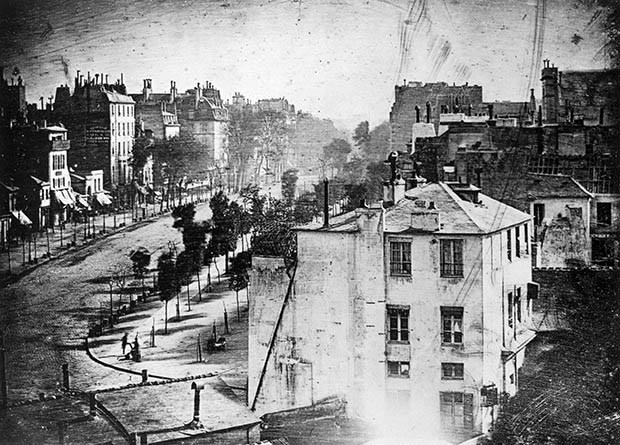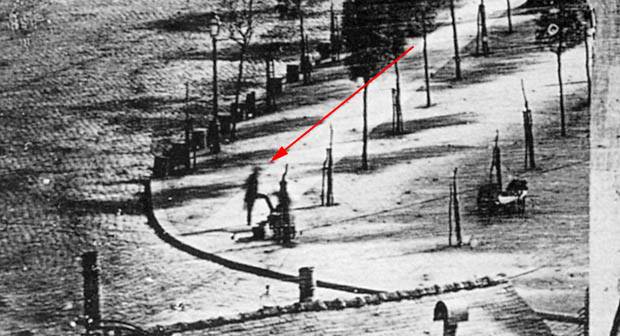SLIDE-1-TITLE-HERE
Replace these every slider sentences with your featured post descriptions.Go to Blogger edit html and find these sentences.Now replace these with your own descriptions.This theme is Bloggerized by Lasantha - Premiumbloggertemplates.com...

SLIDE-2-TITLE-HERE
Replace these every slider sentences with your featured post descriptions.Go to Blogger edit html and find these sentences.Now replace these with your own descriptions.This theme is Bloggerized by Lasantha - Premiumbloggertemplates.com...

SLIDE-3-TITLE-HERE
Replace these every slider sentences with your featured post descriptions.Go to Blogger edit html and find these sentences.Now replace these with your own descriptions.This theme is Bloggerized by Lasantha - Premiumbloggertemplates.com...

Isnin, 7 Februari 2011
Rabu, 26 Januari 2011
Indahnya Molekul Ais Ciptaan Allah SWT
“(Begitulah) perbuatan Allah yang membuat tiap-tiap sesuatu dengan kukuh”….
Gambar ini adalah bahagian kecil dari molekul ais yang dibesarkan ratusan kali ganda. Para ilmuan yang menemui reka bentuk partikel ais yang sangat indah ini mengatakan, di dunia ini sejak awal penciptaan alam ini sehingga sekarang ini tidak pernah ditemui dua partikel ais yang menyamai diantara satu dengan yang lain. Setiap partikel ais berbeza reka bentuknya dari yang satu dengan yang lain, padahal semuanya terbentuk daripada sumber air yang sama. Maha Suci Allah yang telah berfirman:
(صنع الله الذي أتقن كل شيء)! النمل 88
“(Begitulah) perbuatan Allah yang membuat tiap-tiap sesuatu dengan kukuh”
Dikirim dalam Indahnya Molekul Ais Ciptaan Allah SWT
Sumber Artikel : http://peribadirasulullah.wordpress.com/islam-sains/
Architecture Photography : Masjid Zahir
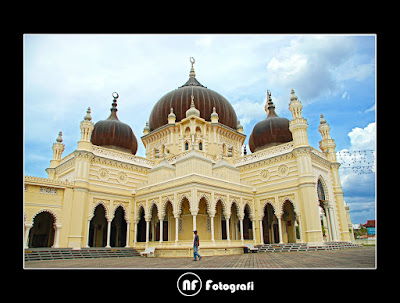
Masjid Zahir atau juga dikenali sebagai Masjid Zahrah merupakan Masjid Negeri Kedah. Bangunan bersejarah ini terletak di tengah-tengah bandar raya Alor Setar. Ia juga dikenali sebagai Masjid Raja kerana ia merupakan masjid Diraja dan terletak di perkarangan Istana Pelamin.
Sejarah
Mula dibina pada 22 Rabiulawal 1330H (11 Mac 1912) atas usaha YTM Tunku Mahmud Ibni Almarhum Sultan Tajuddin Mukarram Shah, tapak masjid ini pada asalnya adalah tanah pusara wira-wira Kedah yang gugur semasa mempertahankan Kedah dari serangan Siam (1821). Reka bentuk masjid ini diilhamkan dari Masjid Azizi di Bandar Langkat, Sumatera Utara. Ia dihiasi dengan lima kubah utama sebagai lambang lima Rukun Islam.
Upacara perasmiannya dilakukan pada hari Jumaat, 6 Zulhijjah 1333H (15 Oktober 1915) oleh DYMM Almarhum Sultan Abdul Hamid Halim Shah. Tunku Mahmud telah membaca khutbah Jumaat sementara baginda Sultan Abdul Hamid Shah mengimamkan solat Jumaat.
Binaan Bangunan
Masjid Zahir mempunyai keluasan tapak kira-kira 124,412 kaki persegi. Dewan tengahnya (Dewan Solat) berukuran 62 x 62 kaki persegi dan dikelilingi oleh beranda berukuran 8 kaki lebar dengan 4 anjung yang setiap satunya terdapat sebuah kubah. Pembinaan masjid ini mengambil masa selama 3 tahun.
Di belakang Masjid Zahir, terdapat Kompleks Bangunan Mahkamah Syariah dan Pusat Pendidikan Asas Kanak-Kanak. Bangunan ini juga terletak berhadapan dengan Balai Nobat dan Istana Pelamin. Masjid ini merupakan antara mercu tanda seni bina negeri Kedah dan antara masjid tercantik di Malaysia.
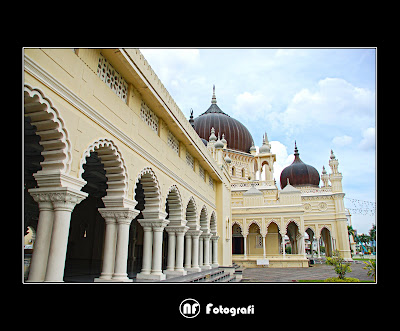
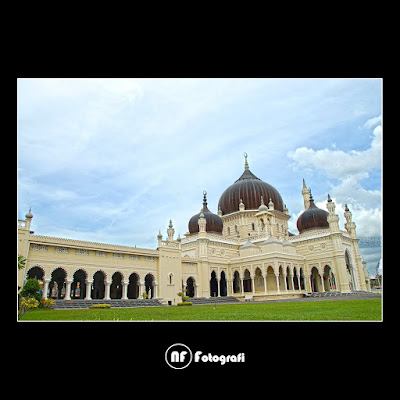
sumber artikel : ms.wikipedia.org/wiki/Masjid_Zahir
Khamis, 20 Januari 2011
Shooting With Available Light
Contributing editor Jim Richardson is a photojournalist recognized for his explorations of small-town life. His photos appear frequently in National Geographic magazine.
Available-light photography has always held the allure of intimacy. Other genres reach for grandeur and beauty or the brutal impact of graphic truth. Available light offers something else: the exotic possibility of going beneath the surface and into the shadows to reveal what is hidden.
What follows is not a technical primer but advice from the hard-won lessons of getting pictures out of tough situations. What I offer is practical, not theoretical. I'm like the man in the joke who spends hours looking for his lost keys under the streetlight, instead of down the darkened street where the keys can be found. "Because the light is better here," he explains.
Actually, that's what we do in available-light photography: look for the interesting light, then figure out how to use it to make an interesting picture. After all, most of what we like about those after-dark pictures is the haunting, unexpected character of the light creating brooding scenes that seem to reveal the world. They're not necessarily about the seamy underbelly of life, but there is always the hint that we are eavesdropping.
(Before I begin in earnest I should make a small confession: I made an additional calculation on taking this available-light picture at a hacienda outside San Miguel de Allende in Mexico. I didn't cheat, per se, but I'm just not making full disclosure by calling it available light. And I'll explain why in just a bit.)
So let me offer a few tips about taking successful pictures when the light gets low:
- Follow the light.
- Balance the light.
- Go with a faster lens.
- Consider using a prime lens.
- Maximize your ISO.
- Wait to shoot until people look into the light.
- Calm down.
- Wait for motionless moments.
- Use your motor drive.
- Learn to love blur.
Why not just use a tripod, you may be asking? Because available light is about life. A tripod is fine if you are shooting nighttime urban landscapes, but real life just won’t hold still for you that long. Moments of truth are fleeting. Tripods make you slow.
What was the trick I alluded to earlier when I photographed the girl in the Mexican shop? I waited until she came over by the door where soft light from the fading sunset lit her beautifully. I didn't follow her around. I found the nice light and waited for the picture to happen there. Like the man under the streetlight, I looked for my keys where the light was better.
Article From : photography.nationalgeographic.com
Gambar manusia pertama di dunia
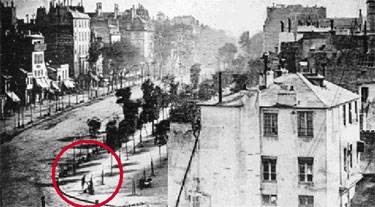
Gambar hitam putih yang menunjukkan seorang budak lelaki sedang mengilat kasut pelanggannya di Perancis dipercayai merupakan gambar fotografi menunjukkan aksi manusia pertama di dunia, lapor sebuah akhbar semalam.
Gambar tersebut dirakamkan oleh perintis dunia fotografi, Louis Daguerre pada tahun 1838 di Boulevard du Temple di Paris, Perancis.
Ia diketahui wujud sejak lama dahulu tetapi mencetuskan minat di Internet baru-baru ini selepas beberapa ahli akademik dari Universiti Rochester mendakwa gambar fotografi manusia pertama dirakamkan di Cincinnati, Amerika Syarikat (AS) pada 1848.
Daguerre merakamkan gambar di Paris itu dengan menggunakan teknik daguerreotype (sempena namanya) yang memerlukaan pendedahan selama beberapa minit untuk membentuk imej di atas satu kepingan perak.
Kawasan Boulevard du Temple itu sibuk dengan orang ramai.
Namun, dalam gambar itu cuma terdapat seorang lelaki dan pengilat kasut.
Keadaan itu berlaku kerana budak pengilat kasut dan lelaki berkenaan di kawasan itu yang tidak bergerak untuk jangka masa agak lama sekali gus membolehkan imej mereka tertera pada gambar itu.
Imej lelaki tersebut dikesan oleh seorang penulis blog, Gig Thurmond dalam blognya, The Hokumburg Goombah, yang mendakwa gambar itu adalah gambar fotografi pertama di dunia yang menunjukkan aksi manusia. - Agensi
